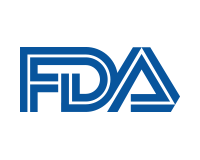United States Department of Health and Human Services

United States Food and Drug Administration: Publications
Date of this Version
4-1966
Document Type
Article
Citation
Reprinted from the Journal of the Association of Official Analytical Chemists, Vol. 49, April 1966.
Abstract
Comparison of five methods for calculating gas chromatographic peaks (disc integration, triangulation, peak height X width at half height, Rt X peak height, and peak height) shows no significant difference in the calculated results when aldrin, heptachlor epoxide, and dieldrin are injected into a gas chromatograph equipped with electron capture detector.
Problems are associated with the calculation of toxaphene, chlordane, DDT, and BHC. The author makes suggestions for calculating these four residues when present individually and in combinations with other pesticides. Use of the last four toxaphene peaks compares favorably with results obtained by using the entire toxaphene curve. A method for calculating DDT in the presence of toxaphene, based on the construction of "parallel lines", gives 89-100% of the DDT in the presence of 1-10 parts of toxaphene. Results for chlordane obtained by adding heights of individual chlordane peaks are shown to be close to results obtained with an integrator. When electron capture detection is used for determining the α, β, λ, and δ-isomers of BHC, the response of the β-isomer is found to be approximately 50% less than response of the other isomers, thus pointing up the need for use of individual BHC isomers for electron capture gas-liquid chromatography quantitation.
Included in
Dietetics and Clinical Nutrition Commons, Health and Medical Administration Commons, Health Services Administration Commons, Pharmaceutical Preparations Commons, Pharmacy Administration, Policy and Regulation Commons


Comments
U.S. government work.